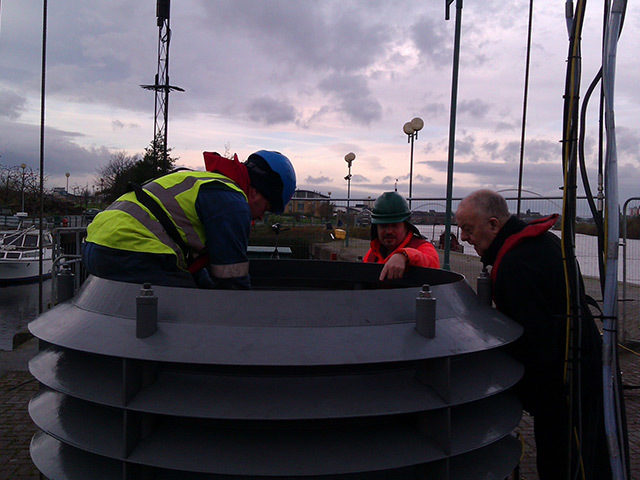
An offshore engineer with long experience of the North Sea oil and gas industry, including as a subsea team leader on BP’s Foinaven, has successfully passed a key hurdle in the development of a novel tidal current turbine device.
The prototype has just been successfully put through initial offshore trials at NAREC (National Renewable Energy Centre) of Blyth in Northumbria.
According to Barnard, the success brings his company Current2Current a vital step closer to securing its future as a renewable energy production company.
Generating electricity from ocean currents and tides, C2C’s TEC (tidal energy converter) is a working prototype using the kinetic energy in moving water, transforming it into useful electricity.
The results generated from the testing were exactly as predicted and have encouraged the company to begin work shortly on TEC4, a 4m-diameter intermediate scale device, which is intended to be the precursor to a full-scale machine, assuming no insurmountable problems.
Founded in 2007 by Barnard (MD) and Mike Hoyle, technical director, the Inverurie firm now has “several people working on making its future bright and sustainable”, a position apparently just reinforced by the trial results.
Barnard said of the NAREC trials: “We are all very pleased with the recent results which have fuelled our enthusiasm to start work on the next TEC, a fully working device which will ultimately be connected up to the grid.
“We believe C2C is well placed to become a market leader in the production of renewable electricity as our technology has several distinct advantages over existing competition. Despite the challenges faced by renewable energy developers, the way forward for C2C is looking extremely positive.”
Advantages claimed for the C2C device include:
- The apparatus is omni directional, being able to exploit any current from any direction;
- Being capable of generating at slower tidal speeds means that the generation period is greater relative to the slack tide period;
- Generating at slower flow rates makes the device suitable for providing power remotely for specialist subsea applications;
- Maintenance can be completed offline, meaning that there is no generation down time;
- The unit produces a net down force during operation, becoming more stable as flow increases;
- Because the unit produces a net down force, only minimal foundation and ground works are required – reducing the costs of installation significantly;
- A preventative maintenance regime will change out modules before they fail for servicing, thus eliminating down time;
- The unit is modular in design, reducing manufacturing and operational costs;
- The unit may be deployed in an array to form a “farm”;
- The units are non-obtrusive above the waterline, meaning that marine traffic is not interrupted;
- The units will be plug and play, capable of speedy retrieval and replacement;
- For grid tied units, the aim will be for each unit to generate in the region of 200Kw to 500Kw of electricity for 70% of the time each day. Farms of 50 to 100 units will be laid out on the seabed, connected together to form generations spreads in the region of 10-20Mw;
For remote low flow applications, the units will target outputs of 2-30Kw, providing this power at point of use
Having successfully got the 1.75m diameter prototype to generate, the objective is to develop and build the 4m machine next year.
If all goes according to plan, this will be closely followed by a 12m unit, sized to supply power on a national scale with an array of 3 x 12m units being installed as a single output system.
“We are getting closer each day to reaching our goal in assisting to bridge the predicted energy gap, whilst reducing the nation’s carbon emissions,” added Barnard.